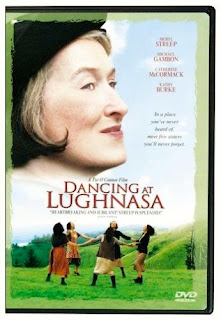 |
| David Degner/Getty Images |
TIMING THE 2018 WINTER SOLSTICE
Southward Solstice
Capricorn Ingress
December 21
10:22:40 PM UT/GMT
05:22:40 PM EST
04:22:40 PM CST
03:22:40 PM MST
02:22:40 PM PST
12:22:40 PM AHST
At Winter Solstice the realm of the night has reached its maximum. Sol reaches his shortest period in the day sky while the night is the longest of the year. From the point of Winter Solstice onward to the Summer Solstice there is an increase of light.
Donna Henes has a very poetic take on this famously still time, a time that is inevitably punctuated by eruptions from the depths of undifferentiated potential.
"The year is a wheel with eight spokes. Each circuit is comparable to the cycle of a human [sic] life. The Winter Solstice is the time before we were born, the great dark uterine void from which all is [sic] formed. The vast black ring around all possibility, its perimeter bulging with promise. Light is conceived in the cold dark at the time of the Winter Solstice. The smallest spark, the most tentative hint of a glow, is imagined in the dense ambiance of its absence. The sun is a mere gleam in the eye of eternity. Light, no matter how tiny, equals life."
-- Donna Henes, Celestially Auspicious Occasions: Seasons, Cycles & Celebrations. New York: Berkley Publishing Group, 1966, p. 5. Thanks to Astrolabe.
:no_upscale()/cdn.vox-cdn.com/uploads/chorus_asset/file/7678595/winter_solstice.jpg) | |||
| Via NASA |
Astrologers look to two astronomical points, the Winter Solstice, and the Spring Equinox, as the year’s starting point. Here’s the vote for the Winter Solstice.
"...in very ancient times the most important yearly turning points were considered to be the summer and winter solstices. Later, in the 4th century A.D., the Emperor Julian opted for the Winter Solstice in particular, "when King Helios returns to us again, and leaving the region furthest south and rounding Capricorn as though it were [sic] a goal-post, advances from the south to the north to give us our share of blessings of the year."
--- Quoted by Charles Harvey in Michael Baigent, Nicholas Campion, and Charles Harvey, Mundane Astrology, 2nd ed. London, Aquarian Press, 1992.
In the 20th century, Charles Carter in England and Alfred Witte in Germany both echoed the Emperor Julian's sentiments and made a persuasive case for the Capricorn ingress to be regarded (astrologically speaking) as the beginning, or start of the year, while the general consensus among most “Western” astrologers is that the Vernal Equinox (Spring) begins the astrological year. Witte saw the Capricorn ingress as the beginning of the solar cycle. In the Northern Hemisphere it's the time when the old Sun dies and a new one is born, and, as Chinese astrologers saw it, increasing yin switches over to increasing yang. Like the New Moon, which most astrologers acknowledge to be the beginning of the lunar cycle, the Winter Solstice marks the end of the waning half of the cycle and the beginning of a new waxing half.
--- via Astrolabe AUG2.htm (TR edited)
In the Eight-fold Year, the Winter Solstice marks YULE.
Here’s an excerpt from a recent solstice discussion in Facebook.
Ellen M Zucker wrote:
One explanation I heard about Dec 25th being used as the date for Christmas is that at the Solstice the Sun virtually comes to a stop for three days. On Christmas, the Sun slowly begins its path northward beginning the cycle of lengthening daylight.
TR: At many places on the planet, maybe on every continent, I don’t know, there are monuments, standing stones, or geological realities, that are or can be used for tracking the course of the sun through the seasons. If you pay attention and live at the same location for some years you will be able to mark and track the sun’s seasonal course from its rise and set points at the solstices. If you haven’t done that, make a point of noting the day of the solstice and the precise (as much as you can) location of sunrise and of sunset. In the northern hemisphere, the point of sunrise will be as far south as it will get (Winter Solstice) and will proceed through the year to rise further and further north until the summer solstice when it reaches the point as far north as it will get. From then the sun’s rise will proceed to occur a titch more southerly, back to the winter solstice. At the equinoxes, the sun’s rise will be precisely due east and will set due west. That’s what the sun dagger in Chaco Canyon is about and the better known Stonehenge in England, marking and measurement. Where you are on the planet makes a difference, but not to the timing of the solstices and equinoxes other than in the southern hemisphere the winter solstice is the summer solstice in the north, etc.
The idea that the sun does not move for three days is an observational one, not a physical reality. The precise moment of standstill can be calculated to the second, although visually, the sun may seem to rise in the same place for a few days in a row. Since computer programs can give the precise timing, I use it. Astrologers have used the timing of solstices and equinoxes for mundane appraisal of the time period to follow. Some do a mind-bendingly good job of that. Certain Uranian astrologers come to mind. I use the precise timing personally and privately to honor the moments.
I expect that many will use this solstice to enjoy the release of the new film, Aquaman.










